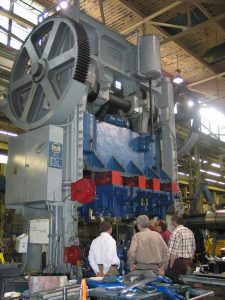What Is Lean Product Development?
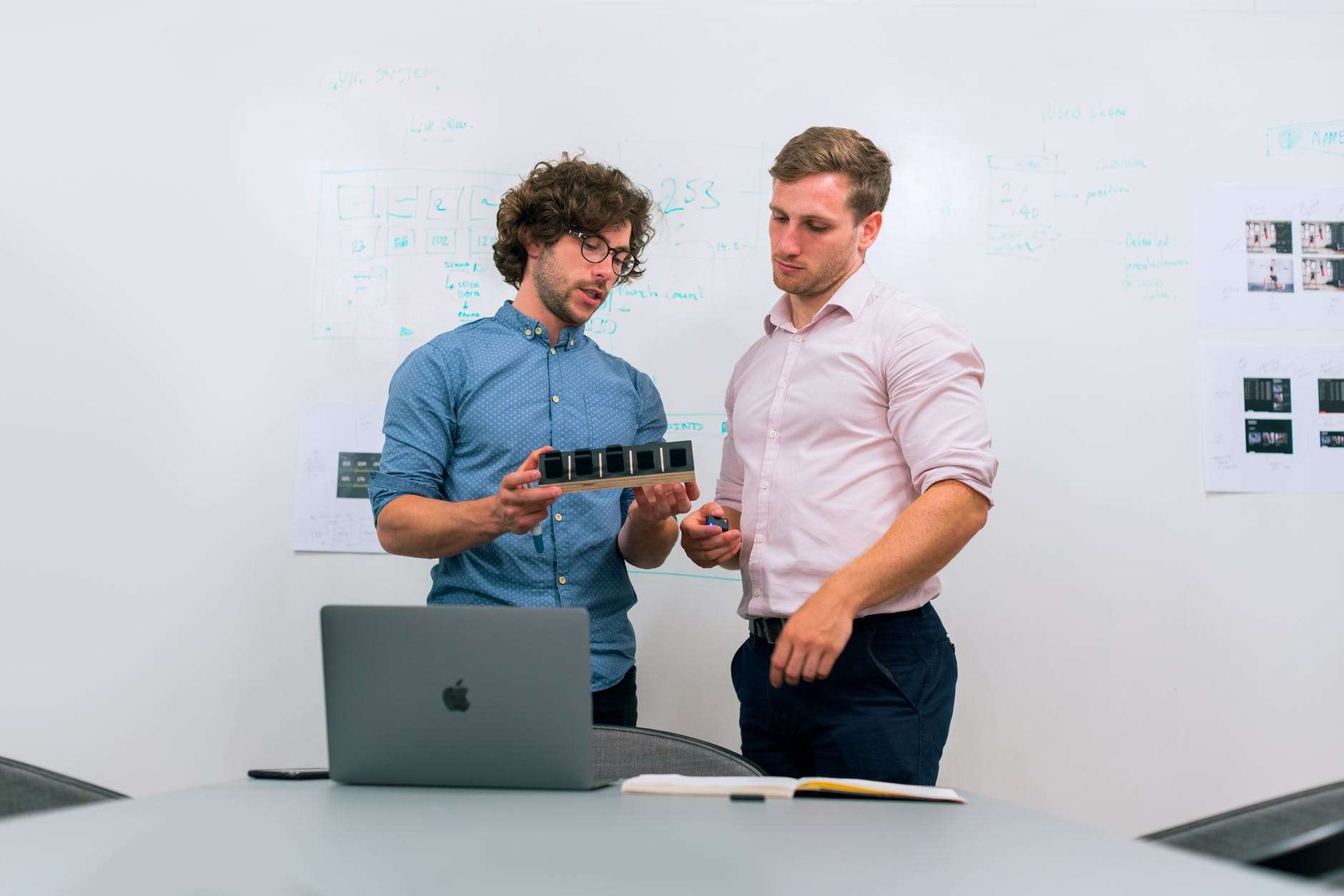
I like to think that you can apply lean to anything, and product development is no exception. Yet, product development is different than manufacturing, so the application of lean is different.
Difference Between Lean Manufacturing and Lean Product Development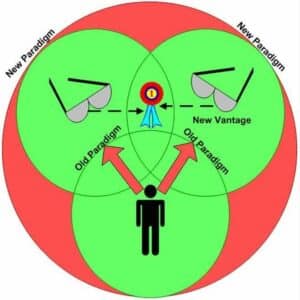
Lean Manufacturing is about reducing variability to zero to create exact replicas. Lean Product development is about increasing variability enough to overcome your barriers to greatness – i.e. thinking outside the box. The design paradigm is the opposite of manufacturing paradigm in the application of lean. So, what is lean product development?
Product Development: Iteration or Replication?
Design flow is different than manufacturing flow. Design is about producing information instead of producing products. Products are made from raw materials that you do not want to waste. Wasting materials is expensive. Information is made from ideas. Ideas are inexpensive and the more ideas we consider, the more robust our designs may be. By considering more and iterating on our ideas we can produce better designs.
Manufacturing also starts with a completed design. The goal in manufacturing consists of replicating that design as exact as possible with little variation. New product development starts with requirements, ideas, and concepts. Design iteration creates new design changes. The goal in design is not to reduce the variation of designs, but to consider as many designs as possible. Considering many alternative designs is one of the first principles of Lean Product Development, the principle of concurrent engineering.
Lean Product Development Process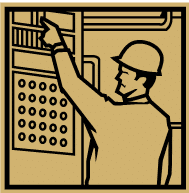
A lean product development process is based on four key elements:
- Concurrent engineering with suppliers, manufacturing, and service functions.
- Expert engineering workforce.
- Entrepreneurial (chief engineer) leadership.
- Responsibility based planning & control.
Concurrent engineering involves considering multiple designs, working with suppliers, manufacturing, and field service concurrently to consider design alternatives.
Expert engineering workforce is based on building highly knowledgeable engineers that have profound knowledge about their products, customer requirements, and engineering possibilities.
Entrepreneurial (chief engineer) leadership is about empowering an expert, experienced engineer to lead the project and make decisions as an entrepreneur would in a startup.
Responsibility based planning & control requires that individual engineers ensure deadlines are met, backup plans are available, and that tasks are completed in some way.
Building a lean product development process requires true lean thinking. Lean tools will not help. Lean slogans will not help. Only by immersing yourself in the customer’s paradigm will you achieve lean. Once you start thinking lean you will start acting lean. And lean product development is not any different. It is all about thinking lean.
What Lean Metrics Should You Use To Measure?
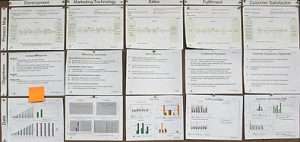
The Bizmanualz Scoreboard displays key segment processes, clearly stated objectives, and on-going performance metrics.
The lean metrics you use depend on where you are on your lean journey. Once you are out of the lean product development phase, you should aim to continue the theme of lean in your manufacturing process. Maximizing your cash-to-cash cycle is the target and your inventory turns or velocity is a great measure. Your inventory turns are composed of your finished goods plus Work In Process (WIP) plus raw materials. What do you need to measure?
Inventory Turns
First, your sales cycle drives finished goods turns, production drives WIP turns, and purchasing drives raw material turns.
Inventory Turns = Cost of Goods Sold / Average Inventory
The faster each of these move, the better your cash flow. Many companies have inventory turns of 5-20. Drive yours over 100 and you are doing great.
Overall Equipment Effectiveness (OEE)
Second, the fewer unproductive man hours you use to drive these measures upward, the better your numbers look. You can use the Overall Equipment Effectiveness (OEE) measure here.
Think of Availability as machine running time (actually making parts) / total machine time (including setup, breakdown, or other down time). Availability takes into account all Down Time Loss, which includes all events that stop planned production for an appreciable length of time (minutes or longer). The target for availability is zero breakdowns.
Performance is based on machine performance or operating speed compared to its maximum speed. Performance takes into account Speed Loss, which includes all factors that cause production to operate at less than the maximum possible speed. The target is no stops or running at slow speeds.
Quality is the number of good parts produced compared to the total number produced. Quality considers Quality Loss, which factors out manufactured pieces that do not meet quality standards, including pieces that require rework. The target for quality is zero defects.
OEE % = Availability % X Performance % X Quality %
Multiply them together and you get the Overall Equipment Effectiveness or OEE, which can be used to find the production waste that is holding you back. OEE varies dramatically by industry but target 90% and you will be doing well here.
Improvements Per Employee

Third, a strong aggressive program of improvement will overcome everything else. Kaizens or improvements tracked per employee will provide a barometer for action. Corrective action, preventive action, or just corrections are all required by ISO 9000. Lean also thrives on continuous improvement. Many companies might be happy with one improvement per employee per year. But if you really want to drive improvement you need something far more aggressive like two improvements per person per month. That’s right, per month!
One improvement per employee year means that an employee works about 240 days in a year and comes up with one idea. What kind of productivity do you think you are getting with 1/240? Now if that same employee provides two ideas per month, that’s 24 ideas per year or 1/10 productivity. Which do you think produces a more competitive company over time? But wait, you can get synergistic returns by communicating your improvements to all employees. Others will see one idea and think of an improvement on it and make it even better.
Lean Product Development
Lean Manufacturing focuses on reducing variability in the quest to create exact replicas (replication). Lean Product development focuses on increasing variability of ideas to achieve greatness. Once you are out of the lean product development phase, you should focus your lean measures as you continue your lean journey.

